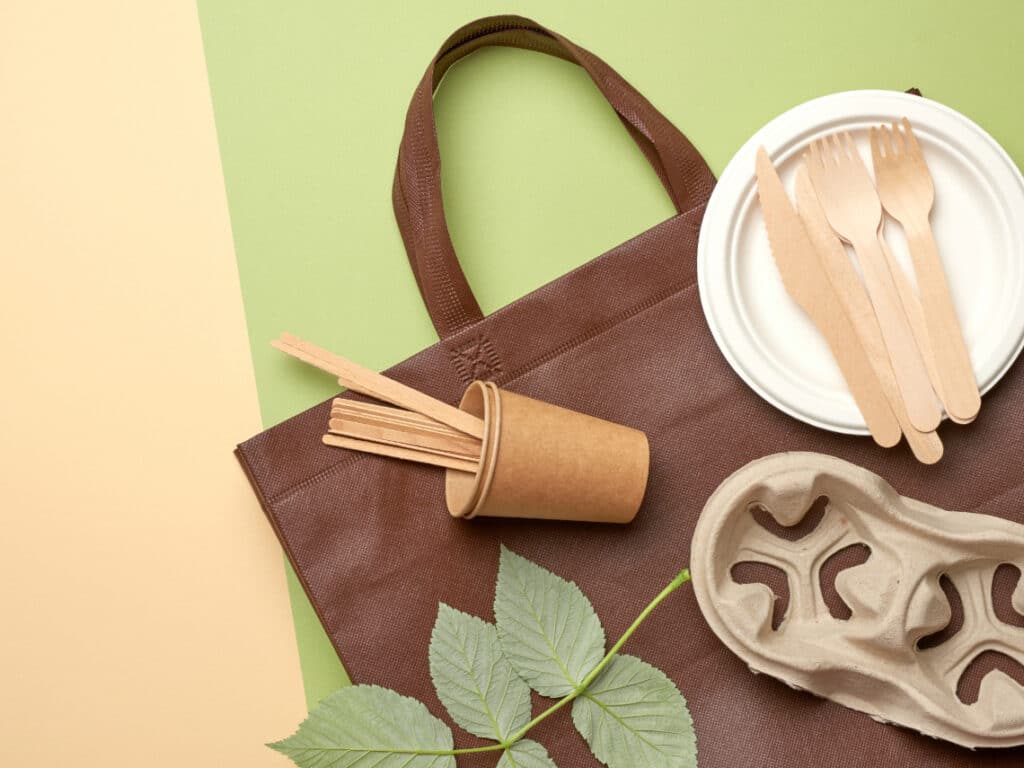As sustainability becomes a growing priority, companies are being called to rethink the afterlife of their packaging. With e-commerce on the rise and consumer expectations higher than ever, businesses face increasing pressure to minimize packaging waste and implement responsible solutions. Simply putting packaging in the bin is no longer enough. Consumers want clarity, action, and accountability, especially when it comes to compostable, recyclable, and sustainable materials.
Pioneer Packaging recognizes that sustainability extends beyond the product. It includes how packaging is designed, what it’s made of, and, most importantly, where it goes after use. The push toward end-of-life solutions like compostable materials, truly biodegradable options, and circular economy models is not only essential, it’s already happening.
Compostable: The Gold Standard for End-of-Life Packaging
Compostable packaging refers to materials that break down into non-toxic, organic matter in a composting environment, typically within 90 to 180 days. Unlike general biodegradable materials, compostable products are certified to leave no harmful residue and contribute to soil health when processed correctly.
The key difference is predictability and certification. Compostable materials are often certified under standards such as ASTM D6400 (in the U.S.) or EN 13432 (in Europe), which ensure that packaging will decompose under specific conditions without leaving behind microplastics or toxic elements.
Innovations in compostable packaging are advancing rapidly. Materials made from cornstarch, sugarcane bagasse, mushroom mycelium, and polylactic acid (PLA) are replacing petroleum-based plastics in everything from mailers and clamshells to labels and cushioning. Among these innovations are plant-based, compostable air cushions—bioplastic alternatives that provide reliable protection for light to medium weight products. One company leading the charge is Storopack, which manufactures these TÜV Austria-certified, home-compostable air cushions. Made partly from renewable resources and ClimatePartner certified, these cushions fully degrade into non-toxic, natural matter in both home and industrial systems. They reduce plastic waste, support the circular economy, and remain compatible with standard AIRplus® machines.
Businesses looking to reduce their environmental footprint should explore compostable solutions where appropriate, particularly for short-lifecycle packaging or food-related applications. However, they must also educate consumers on proper disposal, as industrial composting facilities are not universally available.
Biodegradable: Common Misconceptions and a Call for Clarity
While often used interchangeably with compostable, the term biodegradable is far less specific. Biodegradable packaging can technically break down in the environment, but there are no clear regulations on how long it takes or what is left behind.
Some biodegradable materials may take years to degrade, especially if they end up in landfills where oxygen and microbial activity are limited. Worse, they can fragment into microplastics, causing long-term pollution without offering meaningful environmental benefits.
For this reason, the industry is beginning to move away from vague biodegradable claims and toward clearer, actionable alternatives such as compostable and recyclable. For businesses, this shift means being transparent about what their packaging is made of and how it should be disposed of.
Instead of relying on the term “biodegradable,” companies should verify their materials with third-party certifications and invest in packaging that aligns with sustainable disposal systems.
Compostable Materials: Circular Economy in Action
The circular economy is a regenerative model that aims to eliminate waste by keeping materials in use for as long as possible. Compostable packaging fits into this model by offering a natural return to the earth when managed correctly.
In a circular economy, packaging is either reused, recycled, or compostable, closing the loop on waste. For compostable materials, this means designing packaging that not only meets functional needs but also integrates into a larger composting infrastructure.
To succeed in this system, businesses should:
- Choose materials that are certified compostable and suitable for their product needs.
- Label packaging clearly with disposal instructions.
- Educate consumers on how to properly compost materials.
- Partner with composting facilities and promote local disposal options.
Moving Forward: Practical Advice for Businesses
The future of packaging lies in intentional design, clear communication, and sustainable end-of-life strategies. Here are a few actions that businesses should consider:
- Audit your packaging to identify opportunities for switching to compostable materials.
- Work with certified suppliers to ensure compliance with recognized compostability standards.
- Avoid greenwashing by steering clear of vague biodegradable claims.
- Educate your customers with simple disposal guidance and transparency.
- Stay flexible and open to new materials as innovations in compostable packaging continue to emerge.
In 2025 and beyond, packaging sustainability is not a trend; it’s a responsibility. By embracing compostable materials and supporting circular economy principles, businesses can play a vital role in reducing waste and building a better future.
Pioneer Packaging: Your Custom Packaging Solution Company
For over 38 years, Pioneer Packaging has been your company’s go-to for designing product packaging that sells and performs.
So whether you’re looking to get your paper product packaging at affordable prices or attract new consumers, we’ll find the best packaging solutions that fit your needs. We strive to keep costs down as much as possible to help our customers keep their brands moving along production lines.
Contact Pioneer Packaging today and learn why we’re a leader in B2B packaging solutions.
